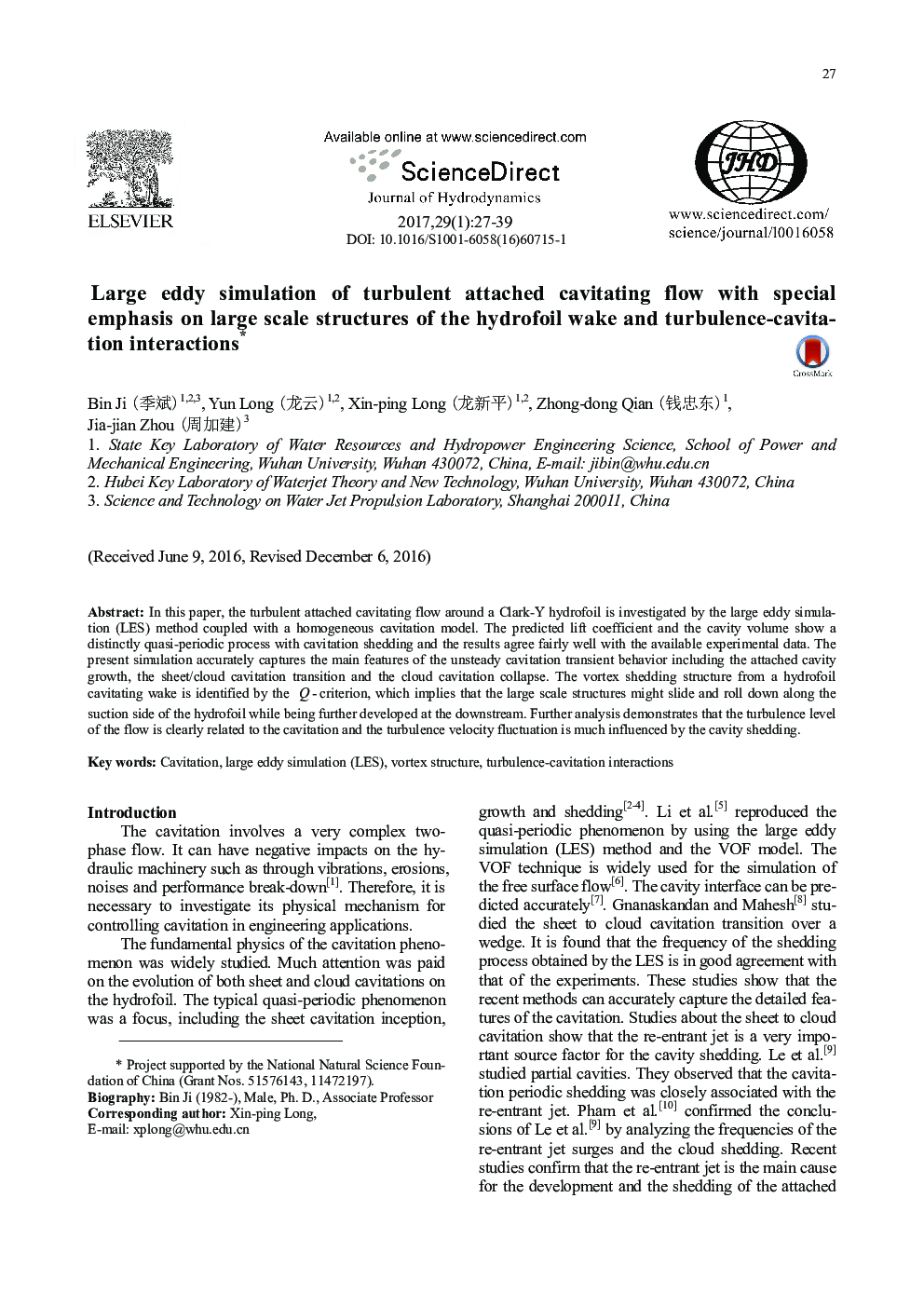| Article ID | Journal | Published Year | Pages | File Type |
|---|---|---|---|---|
| 5473708 | Journal of Hydrodynamics, Ser. B | 2017 | 13 Pages |
Abstract
In this paper, the turbulent attached cavitating flow around a Clark-Y hydrofoil is investigated by the large eddy simulation (LES) method coupled with a homogeneous cavitation model. The predicted lift coefficient and the cavity volume show a distinctly quasi-periodic process with cavitation shedding and the results agree fairly well with the available experimental data. The present simulation accurately captures the main features of the unsteady cavitation transient behavior including the attached cavity growth, the sheet/cloud cavitation transition and the cloud cavitation collapse. The vortex shedding structure from a hydrofoil cavitating wake is identified by the criterion, which implies that the large scale structures might slide and roll down along the suction side of the hydrofoil while being further developed at the downstream. Further analysis demonstrates that the turbulence level of the flow is clearly related to the cavitation and the turbulence velocity fluctuation is much influenced by the cavity shedding.
Related Topics
Physical Sciences and Engineering
Engineering
Ocean Engineering
Authors
Bin (å£æ), Yun (é¾äº), Xin-ping (é¾æ°å¹³), Zhong-dong (é±å¿ ä¸), Jia-jian (å¨å 建),
